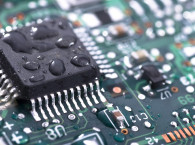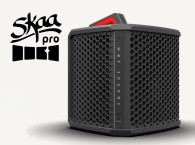
- on Magazine Articles
- Article
Ingress Protection Ratings
The International Electrotechnical Commission (IEC) publishes Ingress Protection (IP) ratings that define Product Enclosure protection classes. Protection provided by enclosures (the IP code) is the rating according to its dust accumulation, ability to reject foreign matter, degree of water resistance (including time and depth under water), and anti-moisture characteristics.

The IPXX rating is formed by adding two figures: the higher the number, the greater degree of protection. The first number indicates dust (particulates), which correlates to the ability to prevent the entry of foreign matter, while the second number indicates protection against moisture and water penetration.
The first value of X:
0: No protection
1: Prevents the intrusion of large solids
2: Prevents the intrusion of medium-sized solids
3: Prevents intrusion of small solids
4: Prevention of solid objects greater than 1 mm
5: Prevents the accumulation of dust
6: Completely prevents dust from entering
The second value of X:
0: No protection
1: No water droplet damage to the outer shell
2: When the shell is tilted to 15°, dropping to the shell has no effect on water droplets
3: 60° water or rain water from the corner to the outer shell has no effect
4: Liquid splashed from any direction without damage to the shell (e.g., general waterproof enclosure inadequate for washing with water).
5: Wash with water without any harm
6: Can be used in a marine environment
7: Can tolerate immersion for a short time (1 m)
8: Long-term immersion under pressure (i.e., waterproof)
The International Electrotechnical Commission (IEC) publishes Ingress Protection (IP) ratings that define Product Enclosure protection classes. Protection provided by enclosures (the IP code) is the rating according to its dust accumulation, ability to reject foreign matter, degree of water resistance (including time and depth under water), and anti-moisture characteristics.

The IPXX rating is formed by adding two figures: the higher the number, the greater degree of protection. The first number indicates dust (particulates), which correlates to the ability to prevent the entry of foreign matter, while the second number indicates protection against moisture and water penetration.
The first value of X:
0: No protection
1: Prevents the intrusion of large solids
2: Prevents the intrusion of medium-sized solids
3: Prevents intrusion of small solids
4: Prevention of solid objects greater than 1 mm
5: Prevents the accumulation of dust
6: Completely prevents dust from entering
The second value of X:
0: No protection
1: No water droplet damage to the outer shell
2: When the shell is tilted to 15°, dropping to the shell has no effect on water droplets
3: 60° water or rain water from the corner to the outer shell has no effect
4: Liquid splashed from any direction without damage to the shell (e.g., general waterproof enclosure inadequate for washing with water).
5: Wash with water without any harm
6: Can be used in a marine environment
7: Can tolerate immersion for a short time (1 m)
8: Long-term immersion under pressure (i.e., waterproof)

About Mike Klasco
Mike Klasco is the president of Menlo Scientific, an audio consulting firm for the audio and loudspeaker industry, located in Richmond, CA. He is a graduate from New York University, with post graduate work in signal processing, and he holds multiple patents l... Read more





